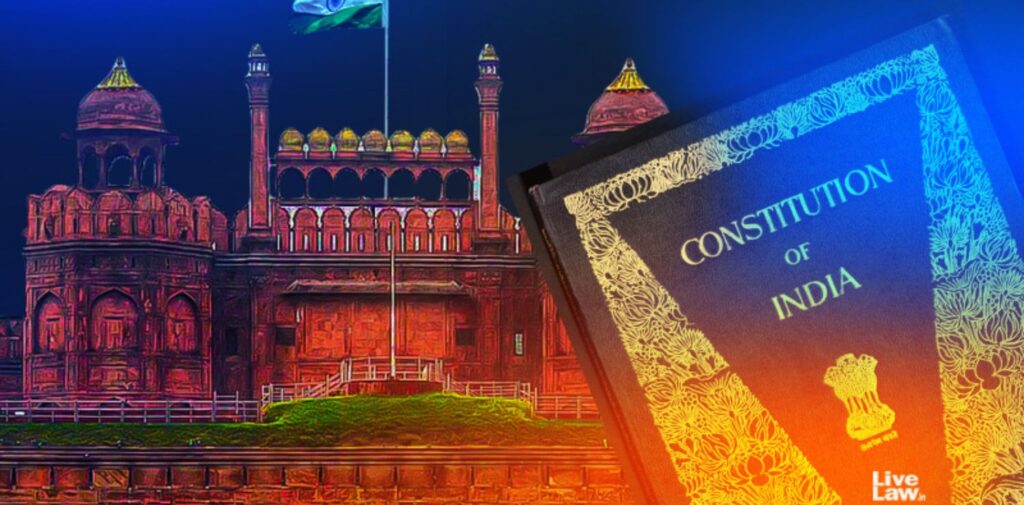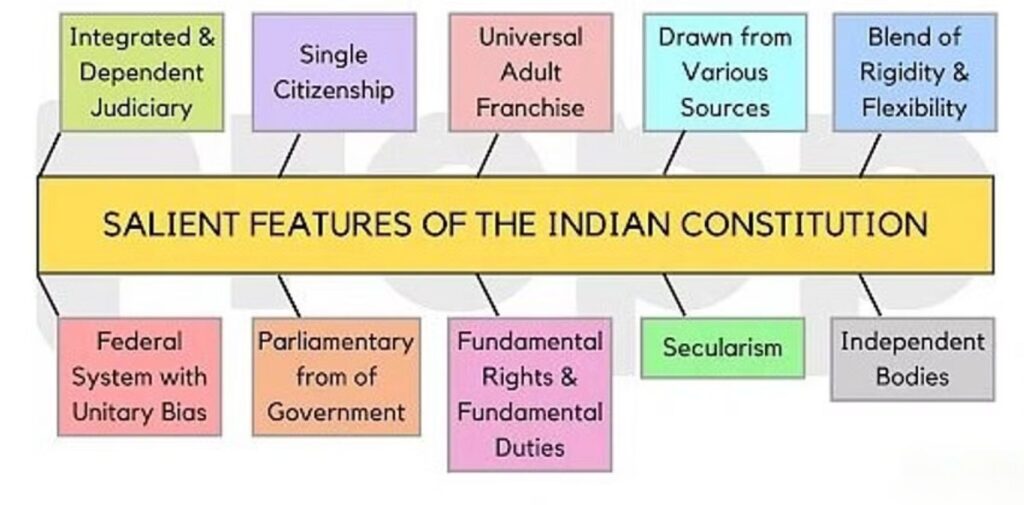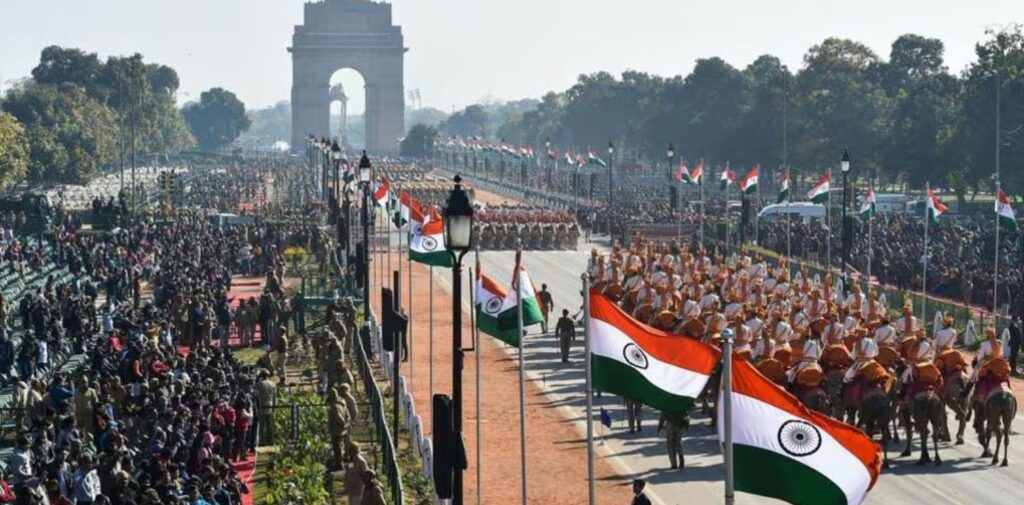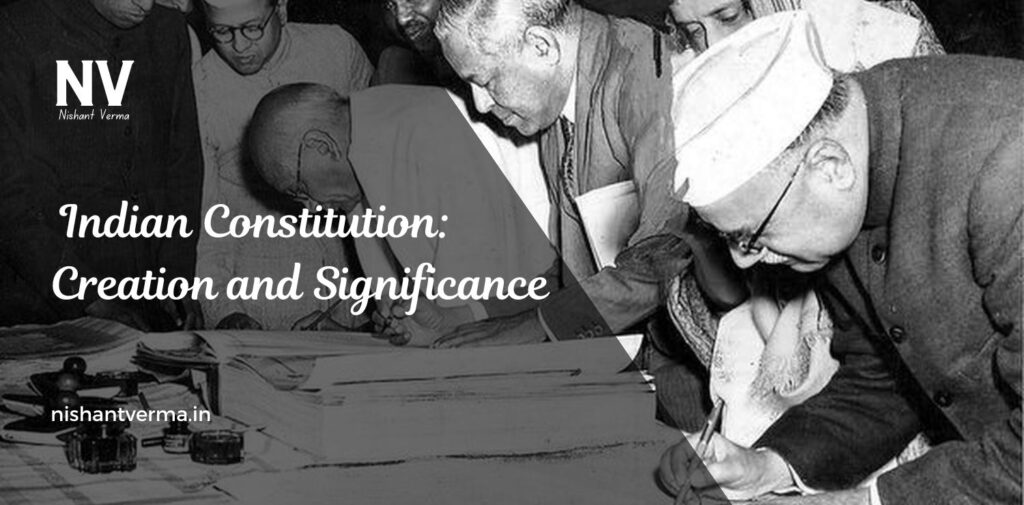The Indian Constitution is one of the most important documents in the history of India. It lays down the framework for how the country will be governed, the rights and duties of the citizens, and the responsibilities of the government. Let’s explore the journey of its creation and understand its importance in simple and easy words!
What is the Indian Constitution?
The Constitution of India is a set of rules and principles that guide how the country functions. It tells us how the government will work, what powers it will have, and how it will treat its citizens. In short, it is like the rulebook for running a country.
The Constitution also guarantees fundamental rights and freedoms to every citizen. These rights include the right to equality, freedom of speech, right to education, and much more.

Why Do We Need a Constitution?
Before India became independent, the country was ruled by the British. During this time, there were no rules that protected the rights of people or explained how the government should function. After independence, it was very important for India to have its own rules to ensure fair treatment, protect individual freedoms, and maintain order in the country.
A Constitution is like a set of rules in a game. Just as players in a game follow certain rules to make sure everything is fair and enjoyable, the Constitution ensures that everyone in India is treated equally and fairly.
The Creation of the Indian Constitution
Creating a Constitution for such a large and diverse country like India was a big task. It required careful planning and discussions. Let’s look at how the Indian Constitution was created.
- The Need for a New Constitution: After India became independent on August 15, 1947, the country needed a new Constitution to manage its affairs. India was no longer under British rule and needed its own set of rules for governance. The Constituent Assembly, which was made up of representatives from different parts of India, was given the task of creating this Constitution.
- The Constituent Assembly: The Constituent Assembly was formed in 1946. This Assembly had 389 members, who were chosen from different parts of the country. Some of the most important leaders who worked on the Constitution included Dr. B.R. Ambedkar, Jawaharlal Nehru, Sardar Vallabhbhai Patel, and Maulana Abul Kalam Azad. They all came together to discuss and create the Constitution of India.
- Dr. B.R. Ambedkar: The Chief Architect: Dr. B.R. Ambedkar is called the “Father of the Indian Constitution” because he played a major role in drafting it. He was a great scholar and believed in justice and equality. His ideas helped shape the Constitution into what it is today.
How Long Did It Take?
The process of creating the Constitution was not quick. The Constituent Assembly met for almost three years to discuss the document. They debated, argued, and carefully decided on each section. After many meetings and discussions, the Constitution was finally adopted on November 26, 1949.
However, the Constitution came into effect on January 26, 1950. This is why India celebrates Republic Day on January 26 every year.

Key Features of the Indian Constitution
Now that we know how the Indian Constitution was created, let’s look at some of its important features.
- Sovereign, Socialist, Secular, Democratic Republic: The Indian Constitution describes India as a sovereign (independent), socialist (supporting social equality), secular (no official religion), and democratic (where people choose their leaders through elections) republic. These words show the core values and goals of India.
- Federal Structure: India has a federal system of government, which means there are two levels of government: the central government (the government of the whole country) and state governments (for individual states). Both have their powers and responsibilities.
- Fundamental Rights: The Constitution guarantees fundamental rights to all citizens. These rights include:
- Right to Equality: Everyone is treated equally, no matter their background, religion, or gender.
- Right to Freedom: Citizens can speak freely, practice their religion, and move freely within the country.
- Right to Education: Every child has the right to receive free education until the age of 14.
- Right to Life: Everyone has the right to live with dignity and personal freedom.
- Directive Principles of State Policy: These are guidelines for the government to follow to ensure the welfare of the people. These principles focus on improving the quality of life, eliminating poverty, providing healthcare, and ensuring equal opportunities for all.
- Independent Judiciary: The Constitution establishes an independent judiciary, which means that the courts are not controlled by the government. The judiciary interprets the Constitution and ensures that laws are applied fairly.
- Separation of Powers: The Constitution divides the government into three branches: the legislature (makes the laws), the executive (carries out the laws), and the judiciary (interprets and applies the laws). This helps to maintain a balance of power and prevents any one branch from becoming too powerful.
Why is the Indian Constitution So Important?
The Constitution is extremely important because of it:
- Protects Our Rights: The Constitution protects the rights of all citizens, no matter their background. It ensures that we are free to practice our religion, speak our minds, and live without fear of unfair treatment. The Fundamental Rights section of the Constitution is like a shield that guards our freedoms.
- Promotes Justice and Equality: The Indian Constitution works to eliminate unfair treatment and promotes equality for everyone. It makes sure that people from all communities, religions, and regions are treated the same. The law applies equally to all citizens, no matter their social or economic status.
- Provides a Framework for Good Governance: The Constitution lays down the rules for how the government should work. It explains how leaders should be elected, what powers they have, and how decisions should be made. This helps in running the country smoothly and fairly.
- Keeps the Country United: India is a very diverse country, with people from many different religions, languages, and cultures. The Constitution helps bring people together by guaranteeing equal treatment for everyone and protecting the rights of minorities.
- Adapts to Change: While the Constitution is the supreme law of the land, it is also flexible. It can be amended or changed if necessary. This allows the Constitution to stay relevant as society changes and grows.

Celebrating Republic Day
India celebrates Republic Day every year on January 26th to honour the adoption of the Constitution. On this day, a grand parade is held in the capital city, New Delhi, where people from different parts of the country come together to showcase their culture, traditions, and achievements.
A Symbol of Unity
The Indian Constitution is a symbol of the unity of the country. It brings together people from all walks of life and ensures that they are treated fairly. It guides the country toward progress and development, while also protecting the rights and freedoms of every citizen.
Conclusion
The Indian Constitution is a remarkable document that ensures justice, equality, and freedom for all citizens. It was created with great care and thought, and it continues to guide the country even today. As citizens of India, it is important to understand and respect the Constitution, as it is the foundation of our democracy and our rights.
Let’s remember the values of the Constitution and work together to make India a better place for everyone!




